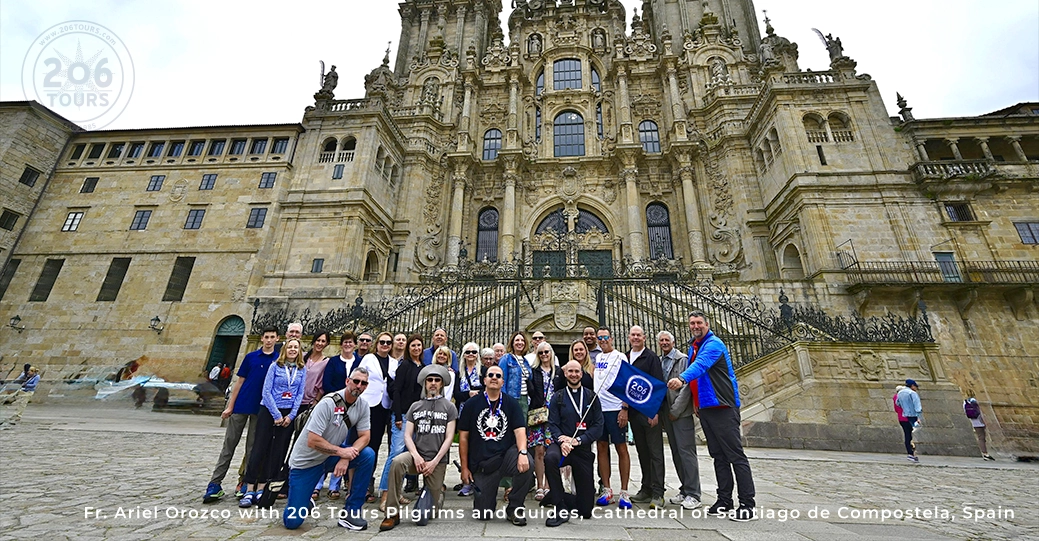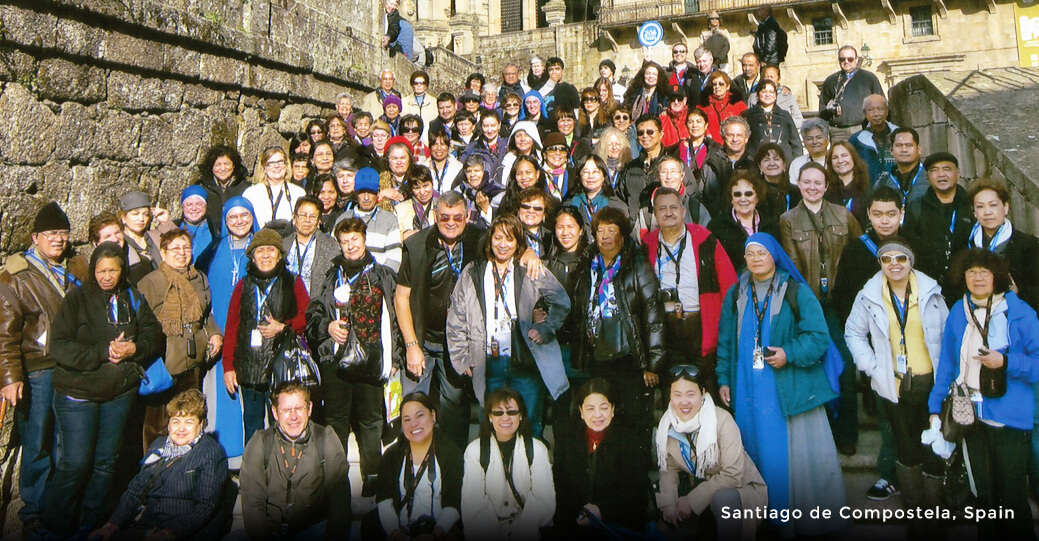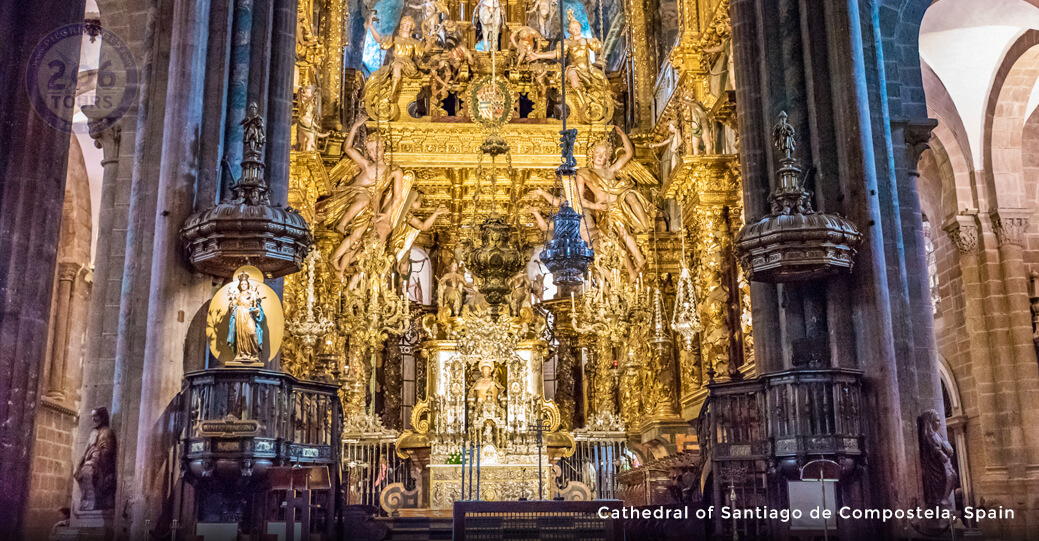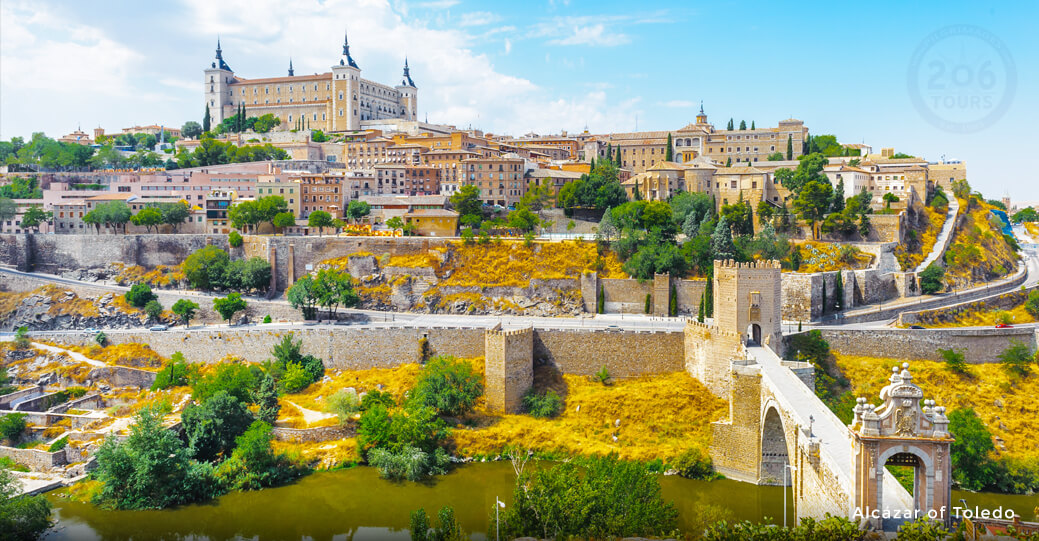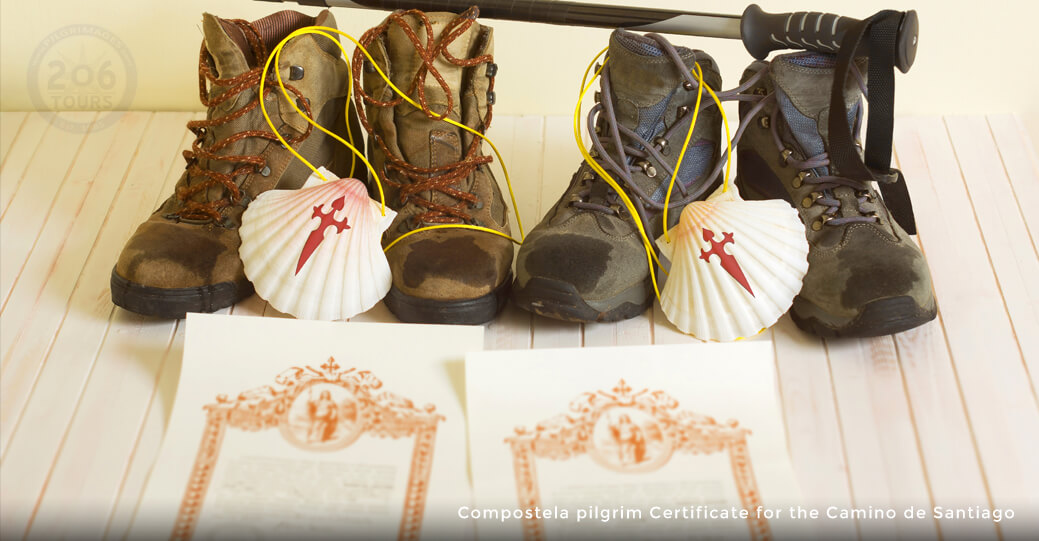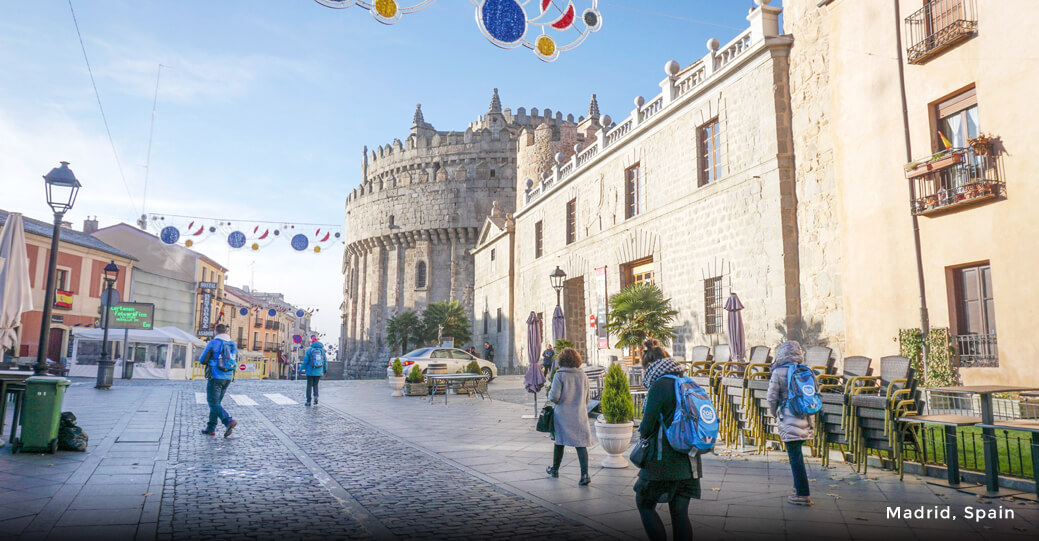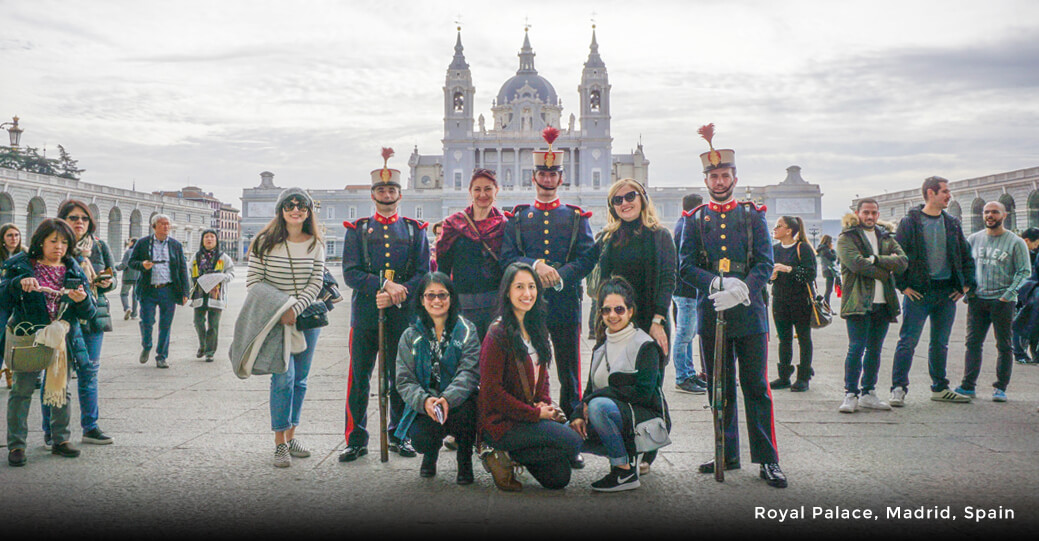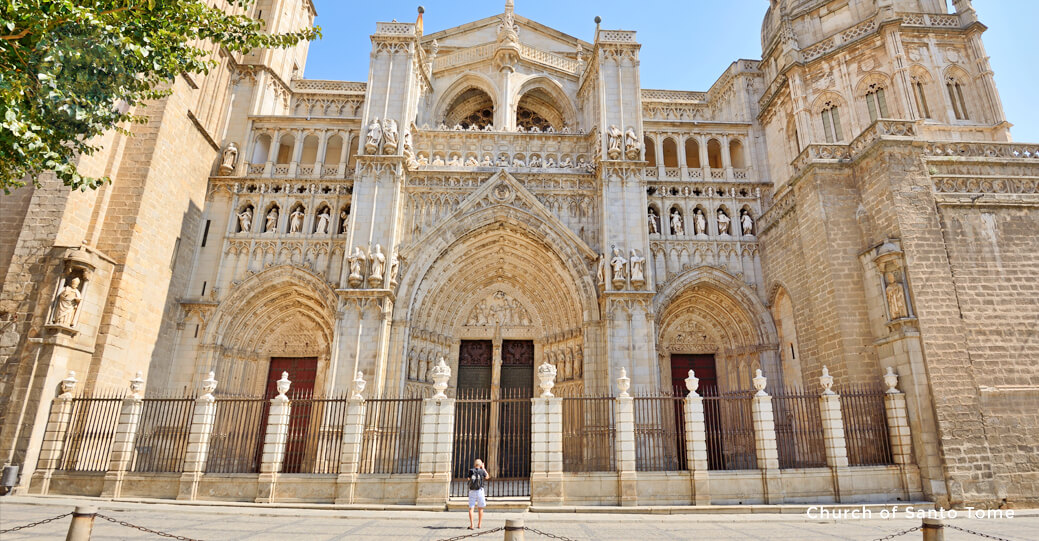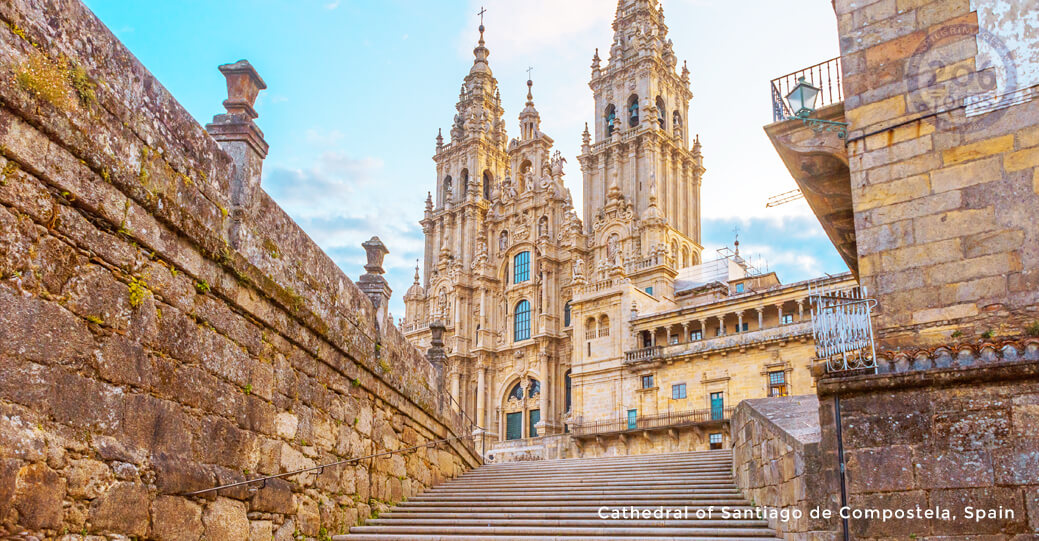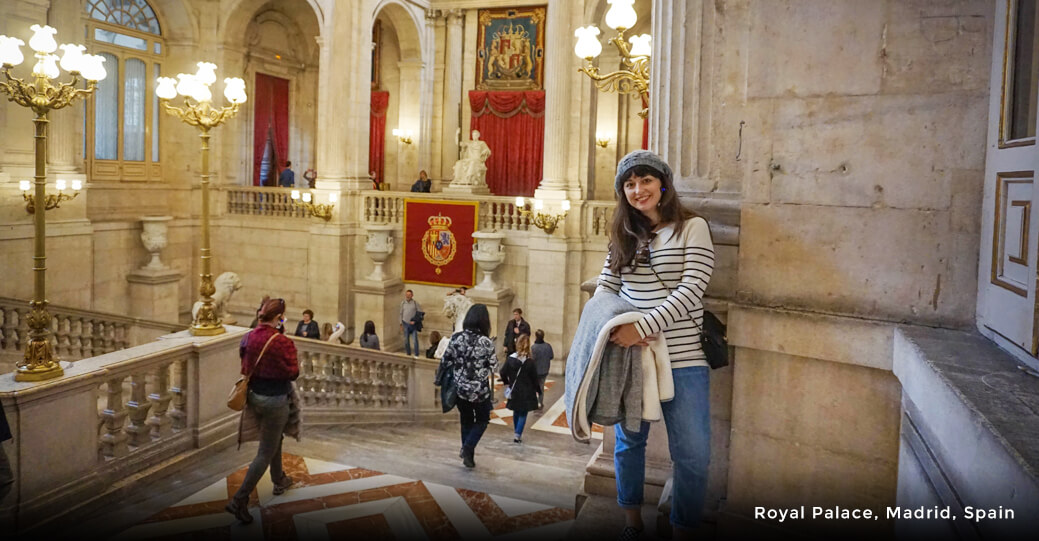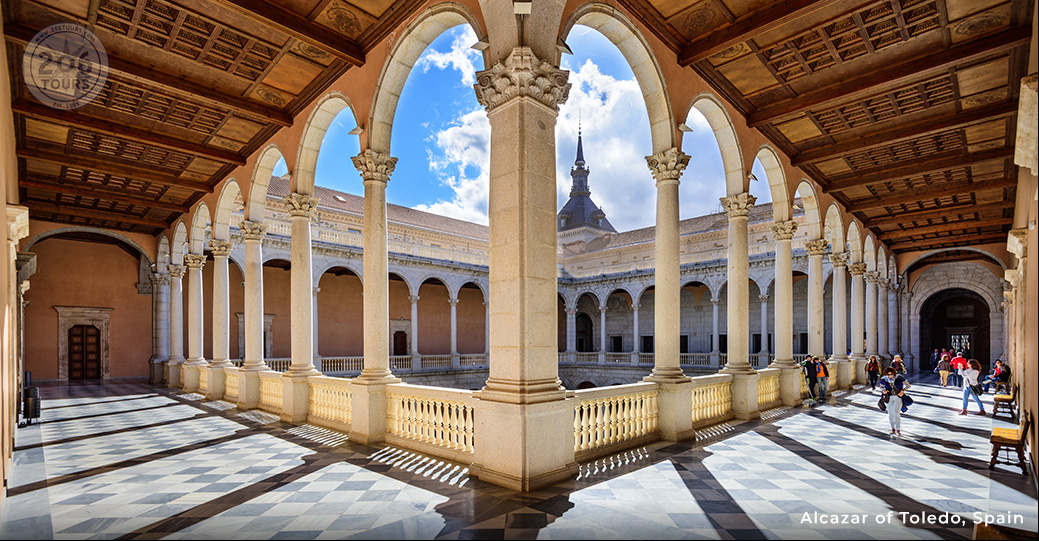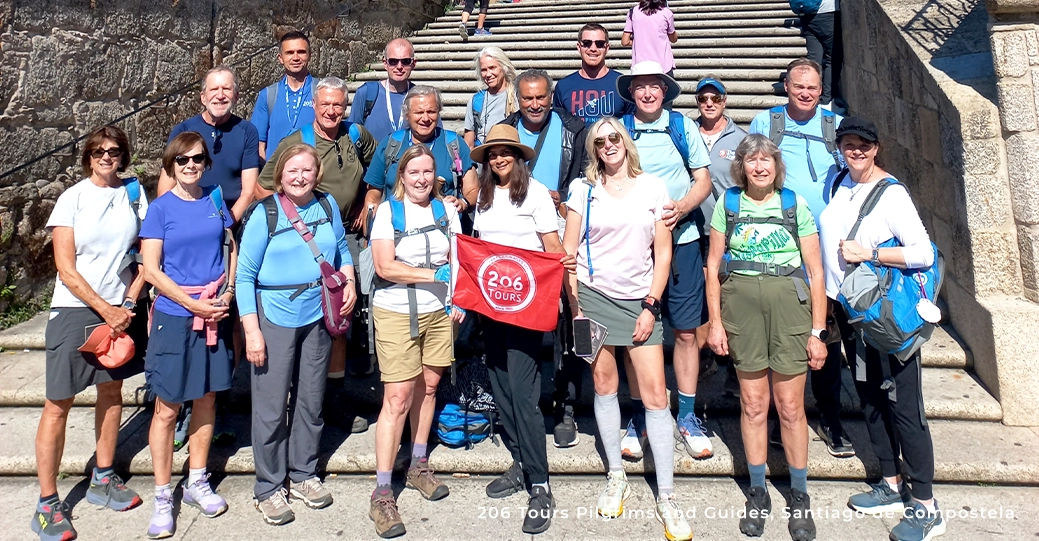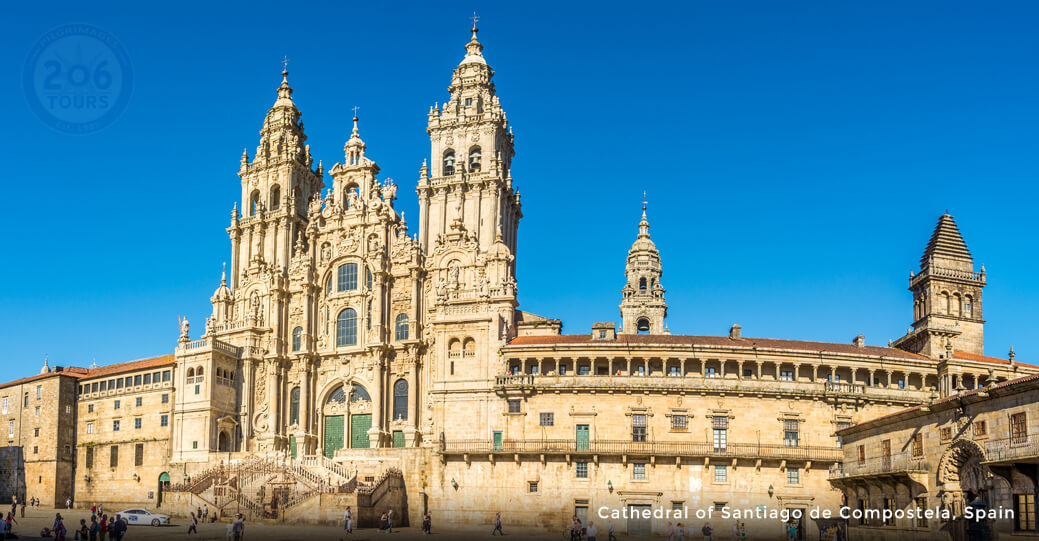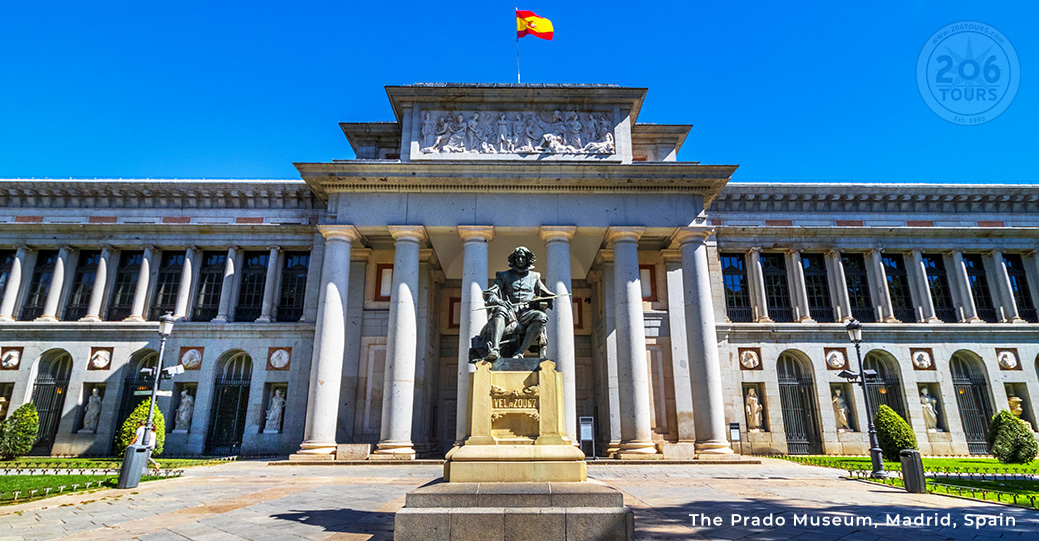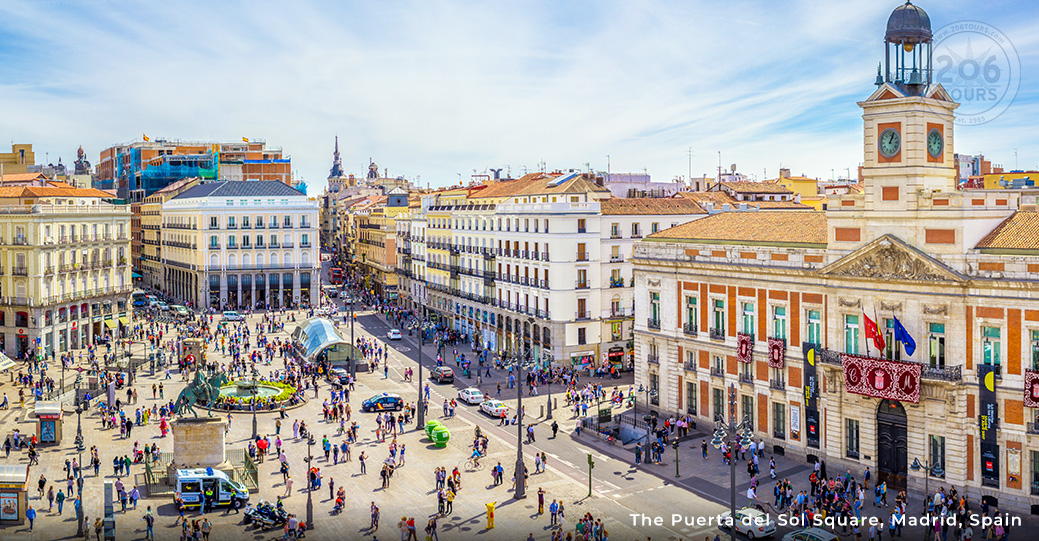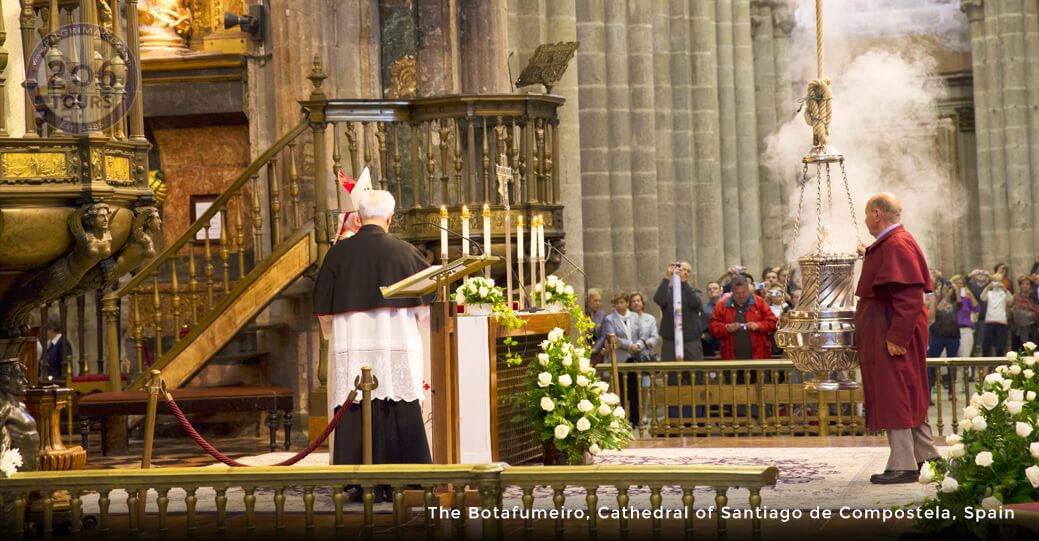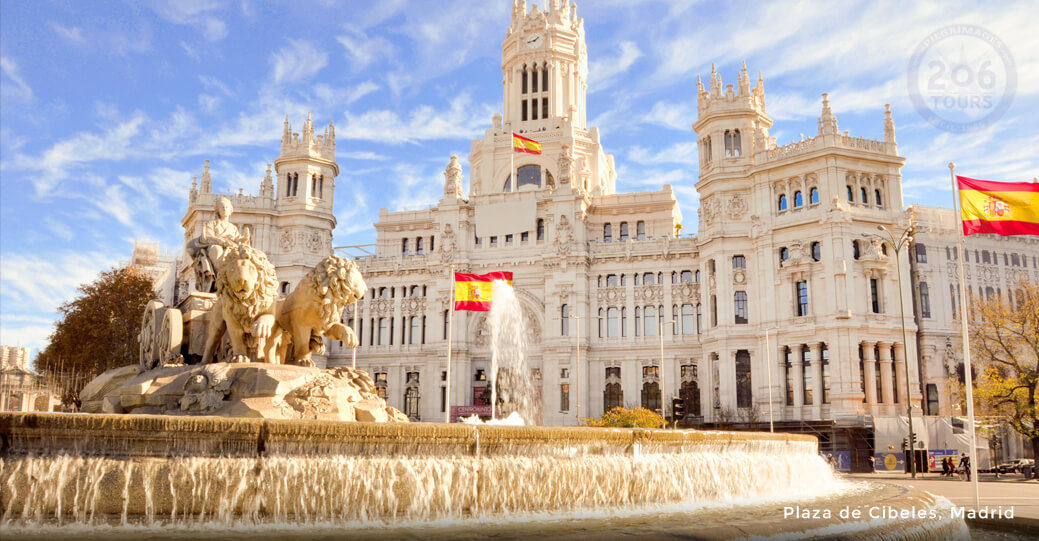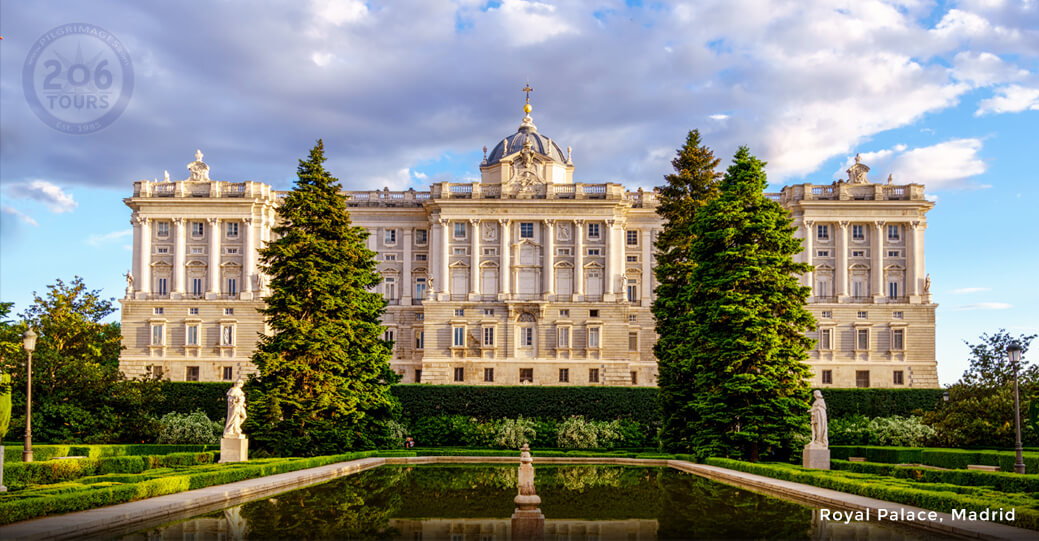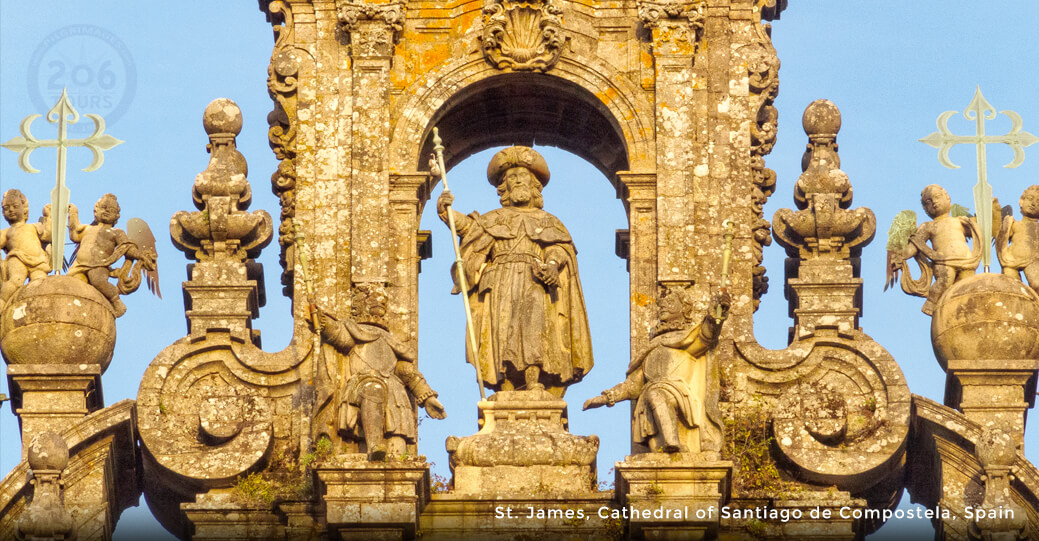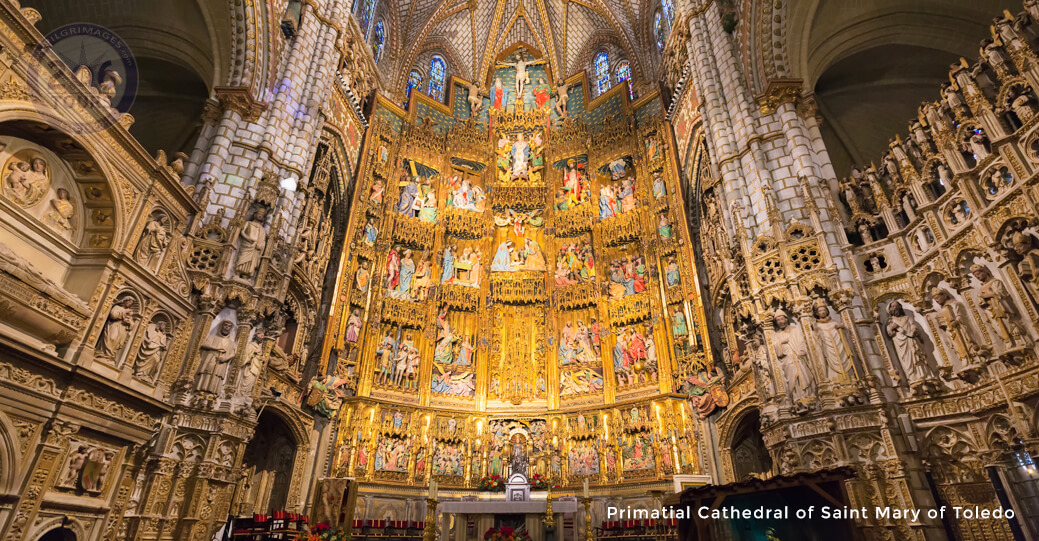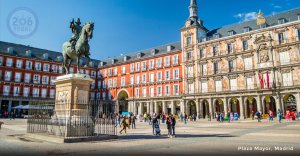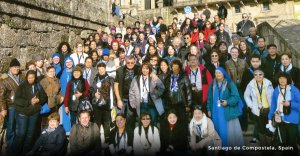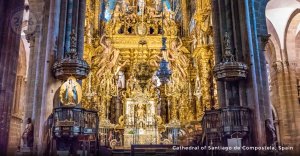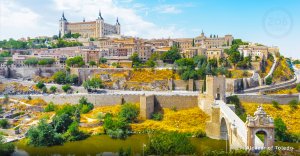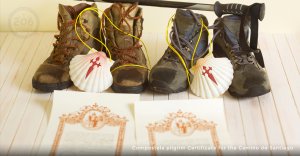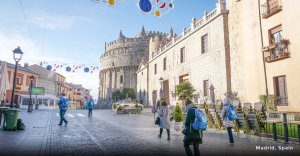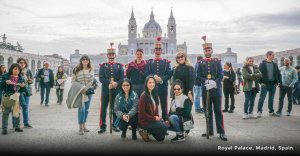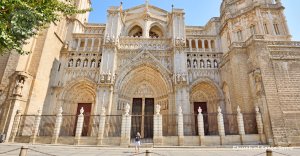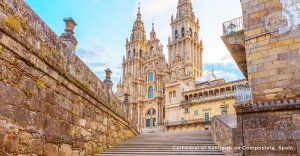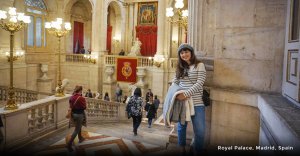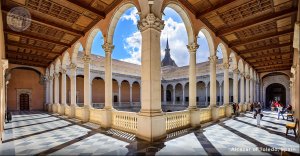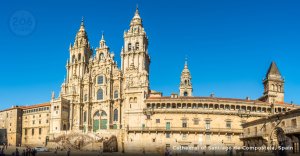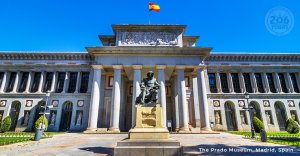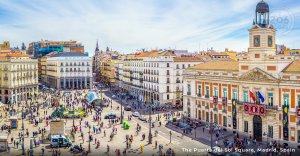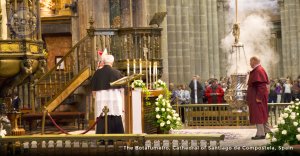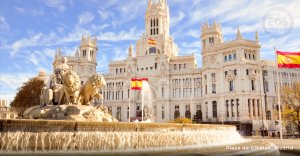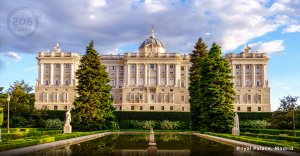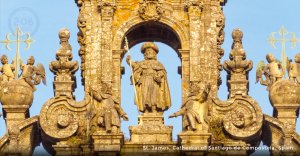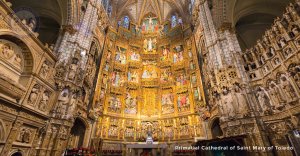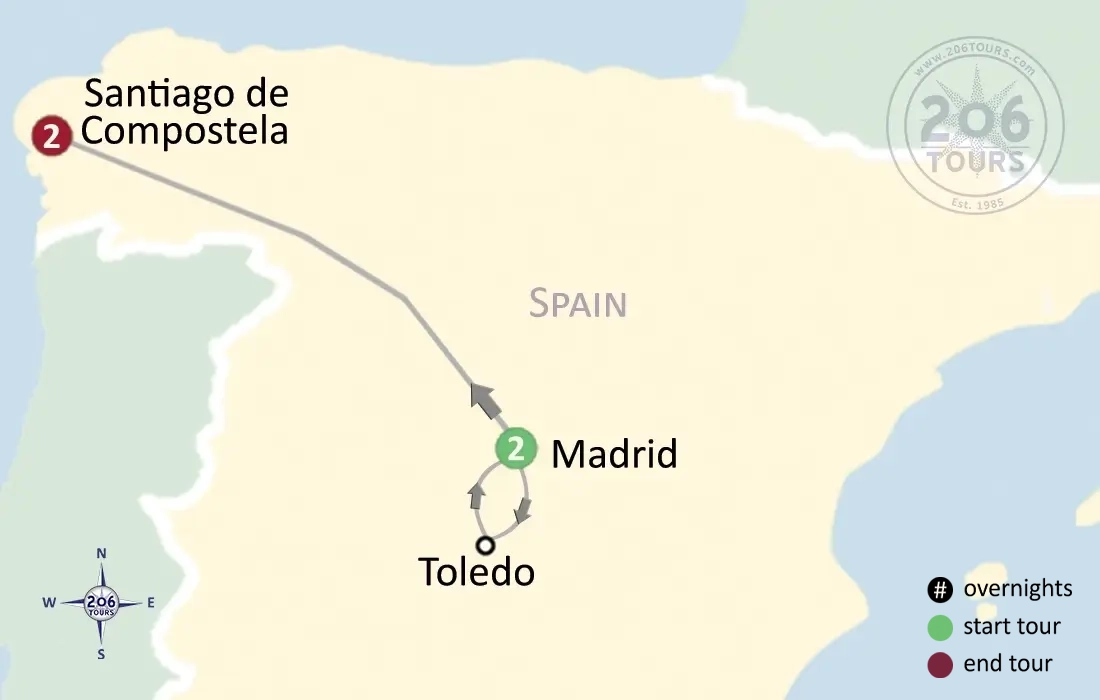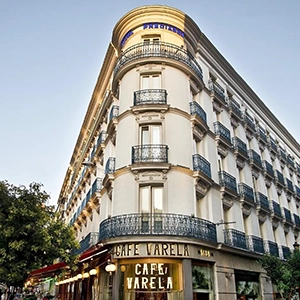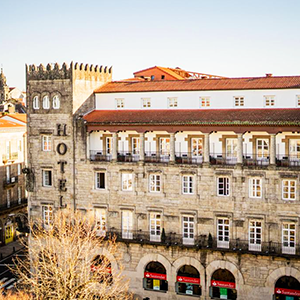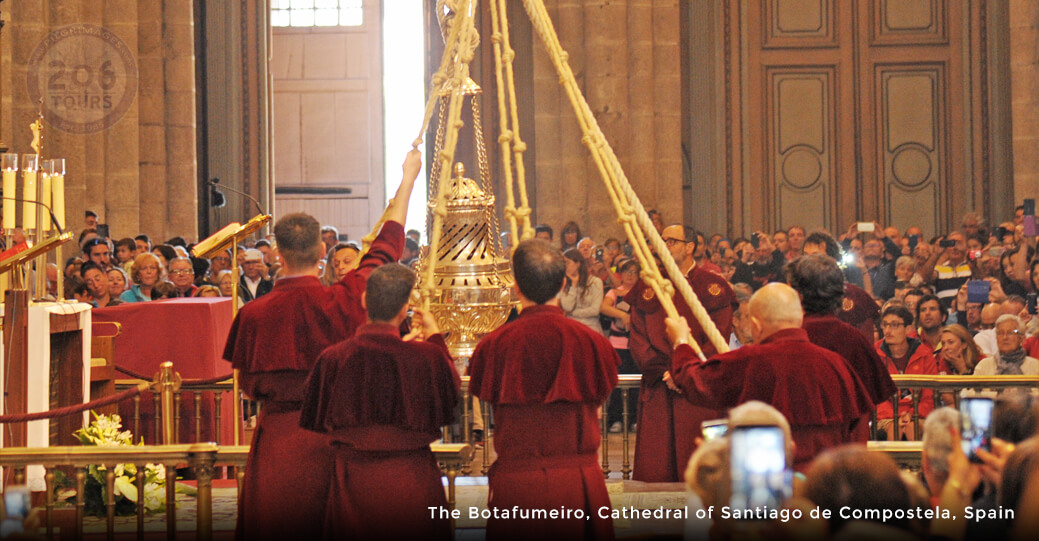Your trip includes
- Round-trip airfare from your desired Airport
- Prepaid seat assignments
- All airport taxes & fuel surcharges
- Catholic Priest
- Mass daily & Spiritual activities
- Hotel accommodations: (or similar) in double occupancy
- ~ 2 nights: Preciados, Madrid, Spain
- ~ 2 nights: Hotel Compostela, Santiago De Compostela, Spain
- Breakfast and Dinner daily
- Wine and mineral water with dinners
- Transportation by air-conditioned motor coach
- Free WiFi & Water on bus
- Assistance of local guide throughout
- Whisper headsets (where needed)
- Transfers as per itinerary
- Sightseeing and admissions fees as per itinerary
- Luggage handling (1 piece per person)
Not Included
- Lunches, Tips to your guide & driver.
Itinerary
Day 1: Depart for Madrid
Make your way to your local airport where you will board your overnight flight(s). Your meals will be served on board.
Day 2: Madrid
Upon arrival in Madrid, collect your luggage at baggage claim. Continue to the arrival hall, where you will be greeted by your tour guide and/or driver. You will be escorted to the bus where your group will transfer to your hotel. You will have free time before dinner and then retire for the evening.
Day 3: Madrid & Toledo
This morning, you will awaken in the capital city of Spain! Following breakfast, you will enjoy a tour of Madrid that includes the Royal Palace and the Plaza Mayor. Both sites are iconic in Madrid, as the Palace hosts state ceremonies and events, and the Plaza Mayor is the geographic and social center of Madrid. This afternoon, you will depart for Toledo. It is known as the City of Three Religions or Cultures because the Christians, Jews, and Moors have lived peacefully in this city for centuries. Your tour includes the glorious Gothic Cathedral, which was built upon the ruins of the Great Mosque of Toledo. Visit La Iglesia de Santo Tome, best known for housing El Greco’s most famous painting, and the Sinagoga del Tránsito, known for its impeccable stucco inscriptions. Additionally, you will visit several monuments, including La Puerta de Bisagras, La Puerta del Cambron, and La Puerta del Sol, among others. Your day will culminate with a return transfer to Madrid, where you will enjoy dinner and an overnight stay.
Day 4: Madrid - Santiago de Compostela
Today, you will depart from Madrid and head towards the city of Santiago de Compostela. On the way, stop on the Calle del Agua of Villafranca del Bierzo. This main street truly embodies Baroque architecture and is lined with palaces and ornate houses. At the entrance of this village, you will find the Romanesque Church of Santiago. Traditionally, pilgrims who were unable to complete El Camino due to illness would receive the Jubilee blessing at this church. Your next two stops will be visits to the gothic-style Collegiate Church of Santa Maria and the Church of St. Nicolas, dedicated to the patron Saint of Villafranca del Bierzo. In the afternoon, you will enter Galicia by way of the city of Lugo. Your first stop will be O Cebreiro, the first village in the region of Lugo nestled in the mountains at an altitude of 1,300 meters. While in O Cebreiro, view the iconic palooza-style houses and the site of a Eucharistic Miracle that occurred in 1300. This evening, proceed to Santiago de Compostela for dinner and an overnight.
Day 5: Santiago de Compostela
This morning, join the walking pilgrims at Monte del Gozo from which the spires of the iconic Cathedral in Compostela are visible. You will walk the last few miles of El Camino and then attend the International Pilgrim Mass at the Cathedral of St. James. Formed by Galician granite, this Cathedral encompasses Romanesque, Gothic and Baroque styles. Additionally, the Cathedral contains numerous valuable pieces of art. Upon entering the Cathedral, pilgrims traditionally hug a statue of St. James. Following this intimate embrace, you will descend into the crypt where the Patron Saint of Pilgrims’ relics are kept. Following your visit, enjoy a sightseeing tour of the city. Some stops on your tour include Obradoiro Square, Fonseca Palace, Gemerez Palace, Franco Street, and many more. Your evening will be free to spend at your leisure, until a final dinner with your group. You will spend a final overnight in Santiago de Compostela.
Day 6: Return Home
Enjoy breakfast at your hotel and then depart to the Santiago Airport for your return flight(s) home.
*206 Tours Disclaimer:
Occasionally local religious and national holidays, weather, traffic conditions and other events may necessitate changes in the sequence of events or the missing of certain events/places. Though every effort will be made to follow the itinerary, it should be considered as an indication, rather than a contract of events and places to be visited.

Special Clergy Discount
A Clergy Discount is available to all members of “Clergy” within the Catholic Church. This includes Seminarians, Deacons, Brothers and Sisters, Priests, Monsignors, Bishops, Cardinals, and His Holiness.

Earn a Free Trip
For groups of 20 or more, you may choose your own departure and earn FREE trips.


